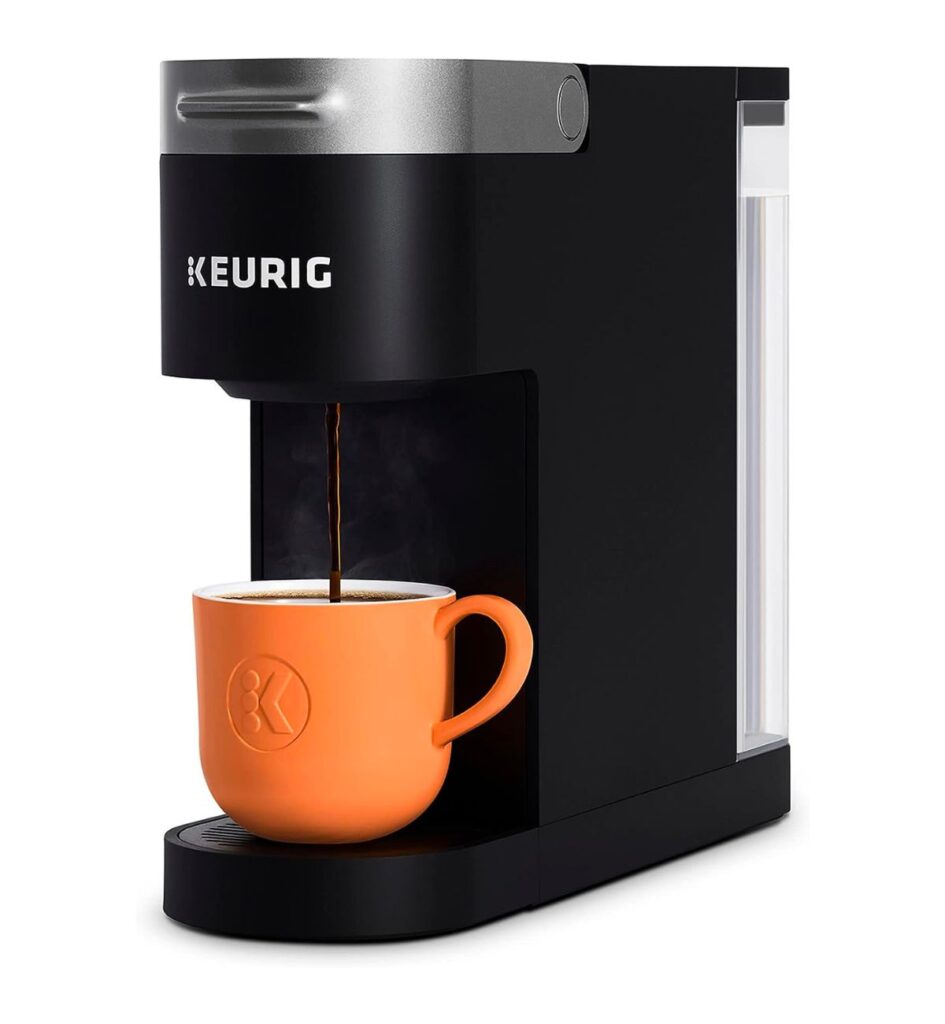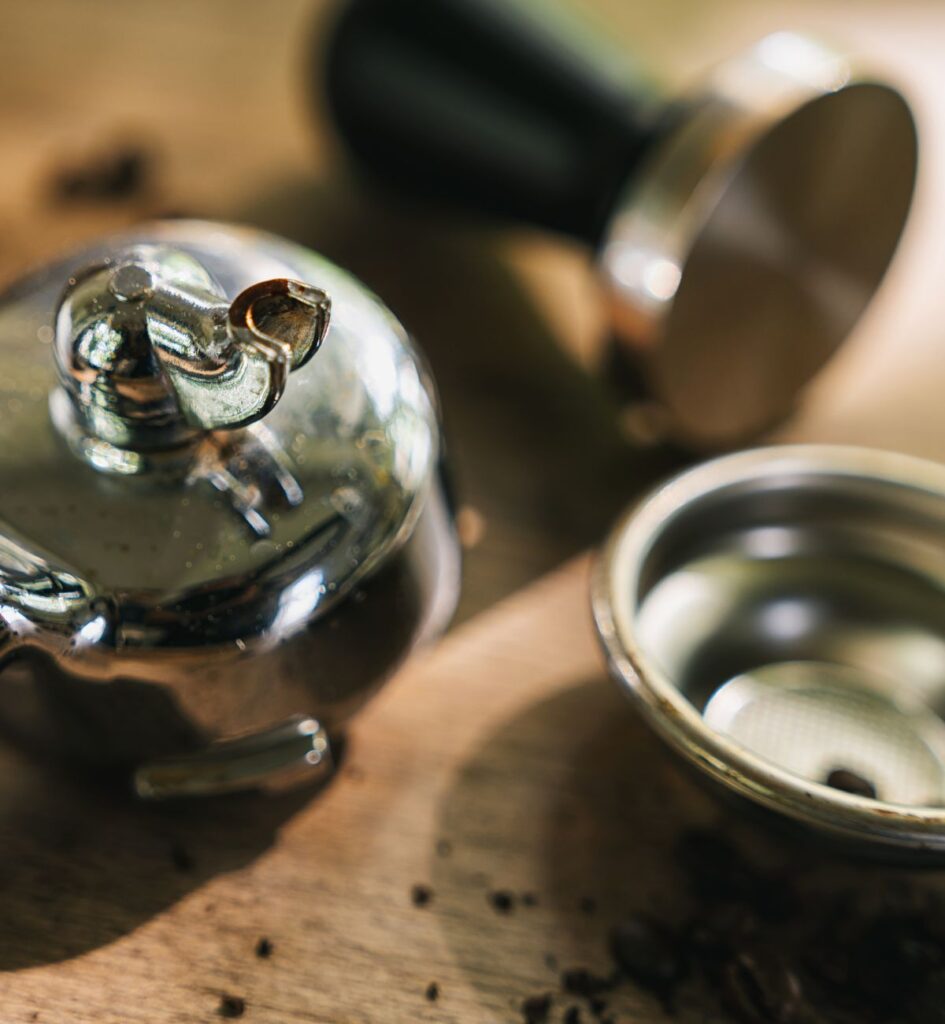How to take apart a Keurig. If you’re experiencing issues with your Keurig machine, whether it’s not brewing correctly, leaking water, or any other problems, you may need to take it apart. Disassembling your Keurig can sound daunting, but with our handy guide, you’ll learn how to take apart a Keurig quickly.
Before we dive into the step-by-step disassembly process, it’s essential to understand the various Keurig machine parts. Familiarizing yourself with the components of your Keurig will make the process easier and give you a better understanding of how the machine works. A view of a Keurig machine with the front panel removed, showing the internal components and wires.
Next, you’ll need to prepare your Keurig for disassembly. This involves performing necessary maintenance tasks such as descaling the machine and troubleshooting common issues. By taking these steps, you can avoid potential roadblocks when disassembling your Keurig.
Now that you’ve prepared your Keurig, it’s time to begin the disassembly process. Our step-by-step guide will walk you through safely dismantling the machine, including removing the water reservoir, taking off the brewer lid, and accessing the internal components.
Once you’ve disassembled your Keurig, it’s essential to clean and inspect the internal components thoroughly. This will help keep your machine in top shape and ensure optimal performance. We’ll provide you with tips on cleaning the brewing chamber, descaling the internal tubing, and checking for any worn-out or damaged parts.
If you’ve encountered specific issues with your Keurig machine, we’ll offer some solutions in our troubleshooting section. We’ll address common problems like clogged needles, brewing issues, or leaks, providing step-by-step instructions on how to fix them.
After completing any necessary repairs or maintenance, it’s time to put your Keurig back together. Our reassembly guide will guide you through the process, ensuring you correctly attach the various components and properly secure them.
Before declaring your Keurig fully reassembled, it’s essential to perform some final checks. This includes inspecting for missed cleaning or damaged parts and performing a test run to ensure your Keurig works correctly before brewing your favorite beverages.
Understanding the Keurig Machine’s Components

Before you begin taking apart your Keurig, it’s crucial to understand its various components. Familiarizing yourself with each part will make the disassembly process much smoother.
| Component | Description |
| Water Reservoir | This is where you pour in water to brew your coffee. It’s typically located at the back of the Keurig machine. |
| Brew Chamber | This is where the coffee pod and hot water meet to brew your coffee. The brew chamber is usually accessed by lifting the brewer lid. |
| Needle Assembly | This component punctures the coffee pod and allows hot water to flow through. If you’re experiencing issues with your Keurig not brewing, the needle assembly may be clogged. |
| Drip Tray | This is where any excess water or coffee drips after brewing. The drip tray can be removed and emptied for cleaning. |
| K-Cup Holder | This part holds the coffee pod in place during brewing. If you notice your Keurig not brewing a full cup, there may be an issue with the K-Cup holder. |
| Internal Tubing | This component carries hot water from the water reservoir to the brew chamber. Descaling the internal tubing is an essential maintenance task to avoid clogs and ensure proper brewing. |
Understanding each component of your Keurig machine will make disassembly and maintenance tasks much easier. Refer to the relevant parts of the Keurig when following our step-by-step disassembly guide in the next section.
Preparing Your Keurig for Disassembly
Before disassembling your Keurig, it’s essential to take a few steps to prepare the machine for safe and easy disassembly. Follow these simple maintenance tasks to ensure a smooth process.
- Descaling the Machine: Over time, mineral build-up can occur in your Keurig, leading to slow brewing or clogging. Descaling the machine can help to remove these mineral deposits and improve its overall performance.
| Descaling Solution: | A commercial descaling solution or a vinegar solution (1:1 ratio of water and vinegar) can be used. |
| Descaling Frequency: | Keurig recommends descaling every 3-6 months, depending on usage. |
| Descaling Process: | Fill the water reservoir with the descaling solution and run the brew cycle. Discard the water and repeat with fresh water until the solution is fully flushed. |
- Checking Water Filters: If your Keurig machine uses a water filter, it’s essential to check and replace it regularly. A dirty or clogged filter can lead to decreased water flow and poor brewing results.
| Filter Type: | Keurig uses charcoal water filters that remove impurities from tap water. |
| Filter Replacement: | Replace the filter every two months or after 60 tank refills, whichever is first. |
| Filter Replacement Process: | Soak the new filter in water for 5 minutes, then rinse it under running water. Insert it into the filter holder in the water reservoir and twist it to lock it in place. |
- Testing for Common Issues: Before disassembling, it’s important to check for any problems that could be easily fixed. Some issues can be resolved without full disassembly, saving time and effort.
Common Keurig Issues: - Slow brewing or clogging - Leaking water or coffee - Machine not heating up - Error messages on the display
| Troubleshooting Tips: | Check the water reservoir for proper seating and water level. Clean the needle or brewing chamber with a paper clip or brush. Check for any disconnected or damaged wires. |
By following these preparatory steps, you can ensure a successful disassembly and avoid any unnecessary frustrating issues along the way.
Step-by-Step Disassembly Guide

Now that you’re familiar with the main components of your Keurig machine, it’s time to disassemble it. Follow these step-by-step instructions to safely take apart your Keurig and gain a better understanding of its workings.
Step 1: Unplug Your Machine
Before disassembly, ensure your Keurig is unplugged and has had time to cool down. This will prevent any potential electrical hazards or burns.
Step 2: Remove the Water Reservoir
The first component to remove is the water reservoir. Lift the lid and gently lift the reservoir out of its housing.
Step 3: Take Off the Brewer Lid
Next, remove the K-cup holder assembly by pulling it upwards. Then, using a flathead screwdriver, gently pry off the brewer lid.
Step 4: Access the Internal Components
After removing the lid of the brewer, you can now easily reach the internal elements of your Keurig. Employ a screwdriver to loosen and remove any screws or fasteners holding these components in place.
If you’re having trouble identifying which screws to remove, consult your Keurig manual or search online for a disassembly guide for your specific model.
Once the screws are removed, you can gently lift out the various internal components, such as the pump, heating element, and tubing.
Step 5: Label Your Components
As you remove the components, label them with masking tape and a marker. This will make reassembly easier and help you track which part goes where.
Step 6: Clean the Components
With the internal components removed, it’s a good time to give them a thorough cleaning. Use a soft-bristled brush and mild soap to clean any dirt or residue gently. Be careful not to damage any of the delicate parts.
Step 7: Inspect for Damage
While you have the components out, inspect them for any signs of damage or wear. Look for cracks, leaks, or corrosion. Any parts that are damaged should be replaced before reassembly.
Step 8: Reassemble Your Keurig
Once you’ve cleaned and inspected the parts, it’s time to start reassembly. Follow the reverse order of the disassembly process using your labeled components and the instructions in your Keurig manual.
Make sure everything is securely fastened, and all screws are tightened. Test each component as you go to ensure it’s functioning correctly.
Step 9: Test Your Keurig
After you’ve completed reassembly, plug in your Keurig and give it a test run. Brew a cup of coffee to ensure everything works correctly before using it regularly again.
Following these steps and taking the time to disassemble and clean your Keurig properly will help it function better and last longer.
Cleaning and Inspecting the Internal Components
Once you have disassembled your Keurig, it’s crucial to clean and inspect each of its internal components. Maintaining these components ensures your Keurig functions correctly and produces a delicious cup of coffee.
The first step is to clean the brewing chamber carefully. Over time, coffee grounds and other debris can accumulate in this area, leading to clogs and other issues. To clean it, use a soft-bristled brush and warm, soapy water to scrub away any build-up gently.
Next, it’s essential to describe the internal tubing of your Keurig machine. This process involves using a descaling solution to remove any mineral deposits that may have accumulated over time. Follow the manufacturer’s instructions for descaling, and rinse the machine thoroughly afterward to remove any residual solution.
Table: Signs of Worn-Out or Damaged Keurig Components
| Component | Signs of Wear or Damage |
| Water Reservoir | Cracks or leaks |
| Brewing Chamber | Clogs, discoloration, or damage to the needle |
| Needle Assembly | Bends, breaks, or damage to the seal |
While inspecting the internal components, look for any signs of wear or damage. The table above outlines some common issues you may encounter. If you notice any of these signs, it’s essential to replace the damaged component or have it professionally repaired.
Regularly cleaning and inspecting your Keurig’s internal components is crucial to its longevity and performance. By following these maintenance tips, you’ll ensure that your Keurig functions correctly and produces delicious coffee every time.
Addressing Common Keurig Issues

No need to worry if your Keurig machine is giving you trouble. Using these troubleshooting tips, you can often solve the problem without spending a fortune on repairs.
Clogged Needles
If your Keurig is not brewing properly or only dispensing a partial cup, the needles that puncture the K-cup might be clogged. To fix this, follow these steps:
- Unplug the machine and remove the water reservoir and drip tray.
- Locate the needle assembly and use a paper clip to clear any obstructions. Be gentle to avoid damaging the needles.
- Replace the removed parts and plug in the machine.
Your machine should now be brewing properly.
Brewing Issues
Brewing issues can often be attributed to a clogged or dirty machine. Try descaling the machine first to remove any build-up affecting performance. If that doesn’t work, consider the following:
- Check the water level in the reservoir to ensure it’s full enough for brewing.
- Clean the needle assembly to ensure it’s free of any obstructions.
- Check the brewing chamber to ensure that it’s clean and free of debris or build-up.
Leaks
If you notice water leaking from your Keurig machine, there may be a few possible causes:
- Check the water reservoir and ensure it’s properly seated and not overfilled.
- Inspect the O-ring on the bottom of the water reservoir or inside the machine for any damage or wear and replace if necessary.
- Check the needle assembly and ensure the K-cup is correctly inserted and not punctured on the top or sides, which may cause a leak.
By addressing these common Keurig issues, you may save yourself the cost of a repair or replacement. If your machine continues to have problems, consider consulting a professional or contacting Keurig customer service.
Reassembling Your Keurig
Now that you have cleaned and inspected your Keurig’s internal components, it’s time to assemble everything. Follow these steps to ensure a successful reassembly:
- Begin by reattaching the drip tray and then the brewer lid. Ensure that the brewer lid is correctly aligned and snapped into place.
- Next, reattach the water reservoir, ensuring it is correctly seated and securely fastened.
- Reconnect the needle assembly by lining it up with the opening inside the brewer’s head, then pressing it down until it clicks into place.
- Finally, reattach the K-cup holder and lower puncture needle, ensuring both are securely in place.
Once everything is reassembled, perform a quick visual inspection to ensure all components are aligned and fastened. Next, run a test cycle to ensure that everything is working correctly.
If your Keurig still isn’t functioning correctly after reassembly, troubleshoot the issue by referring to section six. Remember, if you encounter any issues or are uncomfortable performing repairs or maintenance independently, it’s always best to seek professional assistance.
Perform Final Checks and Test Run
Now that you’ve successfully reassembled your Keurig machine, it’s essential to perform some final checks before you start brewing your favorite beverages.
First and foremost, double-check that you correctly attached all the components and that everything is in its proper place. Ensure the drip tray and the water reservoir are firmly in place and the lid is securely attached. Inspect all the internal components to ensure they are undamaged and securely connected. This will help prevent leaks or malfunctions during use.
Next, fill the water reservoir with clean water. Place a cup under the dispensing pod and run the machine through a test run. This will flush out any residue from the cleaning or maintenance process and ensure everything is in working order. If there are any issues during the test run, double-check the internal components for damage or misalignment.
Once you’ve completed the test run, your Keurig machine is ready for use. Congratulations on successfully performing maintenance and repairs on your machine and ensuring its optimal functioning.
Final Thoughts
Regular maintenance is key to keeping your Keurig machine performing at its best. By following the steps in this guide and performing ongoing maintenance tasks, such as regular descaling and cleaning, you can extend the lifespan of your machine and enjoy delicious coffee and tea for years to come. Feel free to refer to this guide whenever you encounter issues or need to troubleshoot your Keurig machine.
Regular Maintenance Tips for a Well-Functioning Keurig
Regular maintenance is essential to keeping your Keurig functioning correctly and avoiding potential issues. Here are some crucial tips to keep your machine in top shape:
Descale the Machine
Over time, mineral build-up can occur in your Keurig, leading to clogs and other issues. To prevent this, it’s essential to describe your machine every three to six months, depending on usage. You can use any commercial descaling solution or DIY solution, such as vinegar and water. Follow the instructions in the manual to ensure optimal results.
Clean the Needle Assembly
The needle assembly on your Keurig can become clogged with coffee grounds, preventing your machine from brewing correctly. To clean it, remove the assembly and use a paper clip or needle to clear any blockages. Make sure to reassemble it correctly afterward.
Check the Water Filter
If your Keurig has a water filter, check it regularly and replace it every two months. This will help improve the taste of your coffee and prevent any build-up in the machine.
Clean the Brew Chamber
Coffee oils can build up in the brew chamber over time, leading to a bitter taste and potential clogs. To clean it, use a soft cloth or sponge and mild soap to wipe down the chamber regularly.
Use Filtered Water
Using filtered water can help prevent mineral build-up in your Keurig, leading to better-tasting coffee and fewer maintenance issues. If you use tap water, describe your machine more frequently.
Store the Machine Correctly
For optimal performance and protection against damage, store your Keurig in a clean and dry location that is shielded from direct sunlight when not being utilized. These simple maintenance suggestions guarantee that your Keurig remains in excellent condition and is ready to brew whenever desired. If any complications arise, consult our troubleshooting guide or contact the helpful Keurig customer support team for further assistance.


